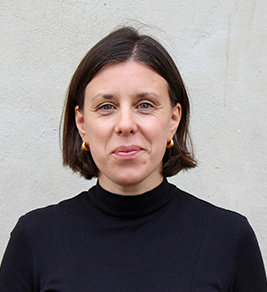A vital countryside is “attractive to all age groups and satisfying to live, work and spend leisure time in..”: This is how Slovenian rural actors envisage the rural future when opinions were gathered in the Horizon2020-project SHERPA to contribute to the EU’s Long-term Vision for Rural Areas.
The input from the rural actors in 20 European countries has been sent to the European Commission and will be discussed within a European platform this week.
SHERPA (Sustainable Hub to Engage into Rural Policies with Actors) is a four-year Horizon2020 project (2019-23) gathering knowledge to contribute to the formulation of recommendations for future EU policies relevant for rural areas. It engages actors in science, society and policy in Multi-Actor Platforms (MAPs). Twenty MAPs were established in early 2020, distributed across Europe. Initial activity of these Platforms was to identify local challenges and opportunities – and create a vision for the development of their territory until 2040. The diversity of these characteristics of rural territories was clearly reflected in the discussions of the MAPs. However, several key, common themes and issues emerged as characteristics of a desirable future.
Discussions confirmed the significance of: i) the predominant trend of demographic shift. Depopulation, especially in intermediate and remote areas, and population ageing, have been identified as the main demographic challenges currently faced by European rural areas; ii) climate change, through greater frequency of extreme meteorological phenomena such as higher temperatures (leading to drought and forest fires) and lower annual precipitation, which affect activities carried out in rural areas (e.g. agriculture, forestry and fishing); iii) the rise of digitisation of services and the use of new technologies. However, access to broadband remains uneven across territories.
Rural areas are attractive in their own right: as a consequence of the high quality of life available, many European rural areas are appealing to live in, work and visit. Scottish actors stressed that rural areas should be places of opportunity, innovation and modernity, whilst respecting and celebrating their traditions and cultural heritage.
To realise this, the perceptions of rural areas (of rural and urban citizens) needs to change to be more positive, highlighting innovative, lively, diverse, and multi-functional rural environments. Policy support for the wide range of actors who build a sustainable rural future together should be coupled with investments in physical infrastructure, basic services and digitisation. This would help to ensure stable rural demography and would create a suitable context for innovations, enabling European rural areas to be at the forefront of solutions to climate change.
Examples of other important elements of visions for rural areas which emerged from the discussions in the MAPs include tackling the social inequalities that exist between social groups due to socio-economic challenges, gender, poverty and lack of integration of immigrant labour force. Geographical inequalities also need to be tackled since those areas with fragile natural resources (climate, soil, land cover) are more vulnerable to economic and social disruption, and environmental pressures (e.g. climate change). Significant issues exist in relation to issues of gender, most notably gaps in employment, wages, and entrepreneurship.
In sum, the EU’s Long-term Vision should be based on ensuring positive perceptions of rural areas, addressing specific characteristics such as low population densities, and unbalanced demographic profiles and quality of life of inhabitants, and encouraging a sense of opportunity. Female entrepreneurship was also identified as an example of an opportunity in the production shift and the diversification of the rural economy. The types of opportunities and issues identified could produce what the Finnish MAP described as a “radical countryside”, one which is more equal, innovative, vital and tolerant.



